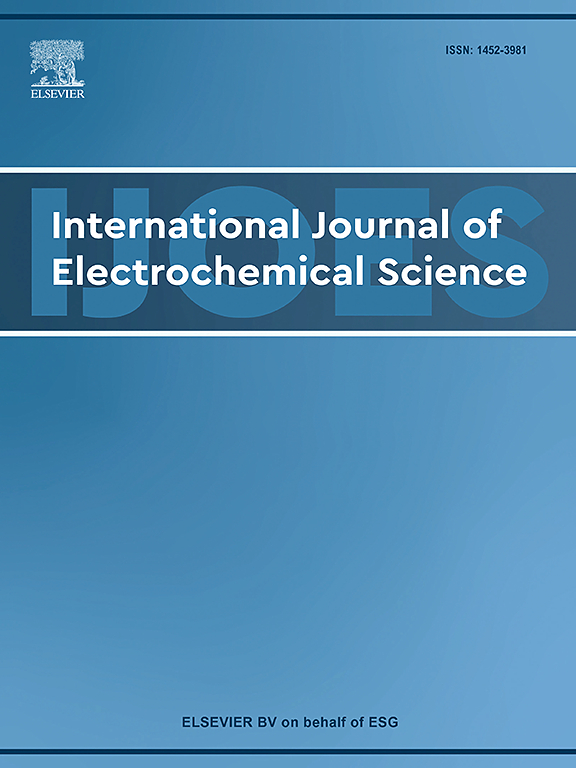Belousov-Zhabotinsky振荡与主成分分析耦合评价柴胡质量
IF 1.3
4区 化学
Q4 ELECTROCHEMISTRY
International Journal of Electrochemical Science
Pub Date : 2025-04-15
DOI:10.1016/j.ijoes.2025.101033
引用次数: 0
摘要
本研究建立了一种综合分析方法,利用别洛乌索夫- zhabotinsky (B-Z)振荡模式结合主成分分析法对药材提取物进行质量评价。优化后的系统采用铂工作电极(d = 2.0 mm)的双电极结构,并表现出三个不同阶段的特征时间演化。系统参数优化得到H2SO4(3.0 mol/L)、丙二酸(0.4 mol/L)和KBrO3(0.3 mol/L)的最佳浓度。高质量样品具有独特的振荡特性,包括最大振幅为0.09-0.14 V,平均振荡周期为16至23 秒,振幅衰减遵循伪一阶动力学(衰减常数为2.3 ×10−3至3.8 ×10−3 s−1)。分析方法精密度高,关键参数的相对标准偏差小于4 %,尤其是峰电位(RSD = 1.7 %)。层次聚类分析初步揭示了三个不同的质量聚类;然而,通过进一步整合定量振荡参数(例如ΔEₓ、诱导时间和振荡寿命)及其与传统质量标记的相关性,这些聚类被细化为五个质量等级,从而提供了更详细的评估框架。通过稳定性测试证实了该方法的鲁棒性,对温度变化( ± 2°C)和试剂浓度波动( ± 2 %)的敏感性最小。对来自三个地理来源的30个样本的分析显示出明显的区域质量模式,PC1和PC2的Q2值分别为0.85和0.78,能够进行可靠的地理来源区分。本文章由计算机程序翻译,如有差异,请以英文原文为准。
Quality assessment of Bupleurum chinense by coupling Belousov-Zhabotinsky oscillation with principal component analysis
This study established a comprehensive analytical methodology utilizing Belousov-Zhabotinsky (B-Z) oscillation patterns coupled with principal component analysis for quality evaluation of medicinal herb extracts. The optimized system employed a two-electrode configuration with platinum working electrode (d = 2.0 mm) and demonstrated characteristic temporal evolution across three distinct phases. Systematic parameter optimization revealed optimal conditions including H2SO4 (3.0 mol/L), malonic acid (0.4 mol/L), and KBrO3 (0.3 mol/L) concentrations. High-quality samples exhibited distinctive oscillation characteristics including maximum amplitudes of 0.09–0.14 V and mean oscillation periods between 16 and 23 seconds, with amplitude decay following pseudo-first-order kinetics (decay constants 2.3 ×10−3 to 3.8 ×10−3 s−1). The analytical method showed excellent precision with relative standard deviations below 4 % for key parameters, particularly peak potentials (RSD = 1.7 %). Hierarchical cluster analysis initially revealed three distinct quality clusters; however, by further integrating quantitative oscillation parameters (e.g., ΔEₘₐₓ, induction time, and oscillation lifetime) and their correlations with traditional quality markers, these clusters were refined into five quality grades, thereby providing a more detailed evaluation framework. The method's robustness was confirmed through stability testing, showing minimal sensitivity to temperature variations ( ± 2°C) and reagent concentration fluctuations ( ± 2 %). Analysis of 30 samples from three geographical origins demonstrated clear regional quality patterns, with Q2 values of 0.85 and 0.78 for PC1 and PC2 respectively, enabling reliable geographical source discrimination.
求助全文
通过发布文献求助,成功后即可免费获取论文全文。
去求助
来源期刊
CiteScore
3.00
自引率
20.00%
发文量
714
审稿时长
2.6 months
期刊介绍:
International Journal of Electrochemical Science is a peer-reviewed, open access journal that publishes original research articles, short communications as well as review articles in all areas of electrochemistry: Scope - Theoretical and Computational Electrochemistry - Processes on Electrodes - Electroanalytical Chemistry and Sensor Science - Corrosion - Electrochemical Energy Conversion and Storage - Electrochemical Engineering - Coatings - Electrochemical Synthesis - Bioelectrochemistry - Molecular Electrochemistry

 求助内容:
求助内容: 应助结果提醒方式:
应助结果提醒方式:


